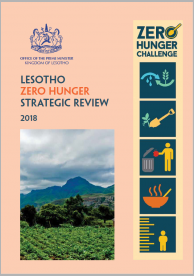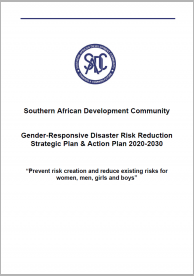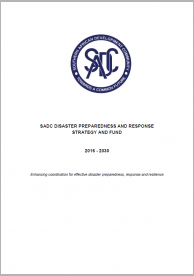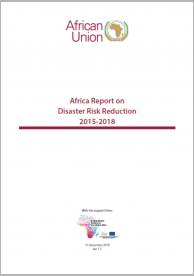
In order to address the challenges that inhibit the country’s potential to achieving zero hunger by 2030, the Government commissioned the Lesotho Zero Hunger Strategic Review (LZHSR) report.
Inundation; Includes flash floods.
The following is a list of all conten labeled as "Flood"

In order to address the challenges that inhibit the country’s potential to achieving zero hunger by 2030, the Government commissioned the Lesotho Zero Hunger Strategic Review (LZHSR) report.

This paper provides an overview of what climate change will mean to subsistence and smallholder farmers in Lesotho, and how the capacity for climate change adaptation in agriculture can be strengthened, focusing on selected areas of crops, livestock and forest-based livelihood systems, to stabilize and improve yields.

The purpose of the Regional Indicative Strategic Development Plan is to deepen regional integration in SADC. It provides SADC Member States with a consistent and comprehensive programme of long-term economic and social policies. It also provides the Secretariat and other SADC institutions with a clear view of SADC's approved economic and social policies and priorities.

The SADC Gender Responsive Disaster Risk Reduction Strategy and Plan of Action: “Prevent Risk Creation and Reduce Existing Risks for Women, Men, Girls and Boys” 2020-2030 (GRDP) is designed to enhance regional capacities for gender-responsive disaster risk prevention, management and coordination in support of humanitarian assistance.

Enhancing coordination for effective disaster preparedness and response and resilience outlines the preparedness and response strategy and fund for the SADC region (hereinafter referred to as the Strategy and Fund) to facilitate a coordinated support for SADC Member States when they are overwhelmed by a disaster event. To this end the Strategy and Fund has three priorities:

The aim of the Report is to comprehensively report on the implementation of the Programme of Action for the implementation of the Sendai Framework 2015-2030 and the Africa Strategy for Disaster Risk Reduction. This report focusses on all of the Member States of the Africa Union.
The objective is to use the outcome of the report to:

This Master Plan was designed for a 13-year time horizon (2017-2030) to align it with the main instruments that guide the actions that contribute to Disaster Risk Reduction at a global and local scale, namely the Sustainable Development Goals and the Sendai Framework for Disaster Risk Reduction 2015-2030.

This Law establishes the legal regime for disaster management, comprising prevention, mitigation of the destructive effects of disasters, development of relief and assistance actions, as well as reconstruction and recovery actions in the affected areas.

The overall objective of this strategy is to establish action guidelines to build resilience, including the reduction of climate risks, in communities and the national economy and to promote low carbon development and the green economy, through their integration into the sectoral planning process and location.

The Master Plan for the Prevention and Mitigation of Natural Disasters is part of the strategy to fight poverty and, as so, of the govermnment's five-year programme, which recognizes that natural calamities and their negative impacts aggravate poverty. As so, the government defined, in its programme, the following objectives: